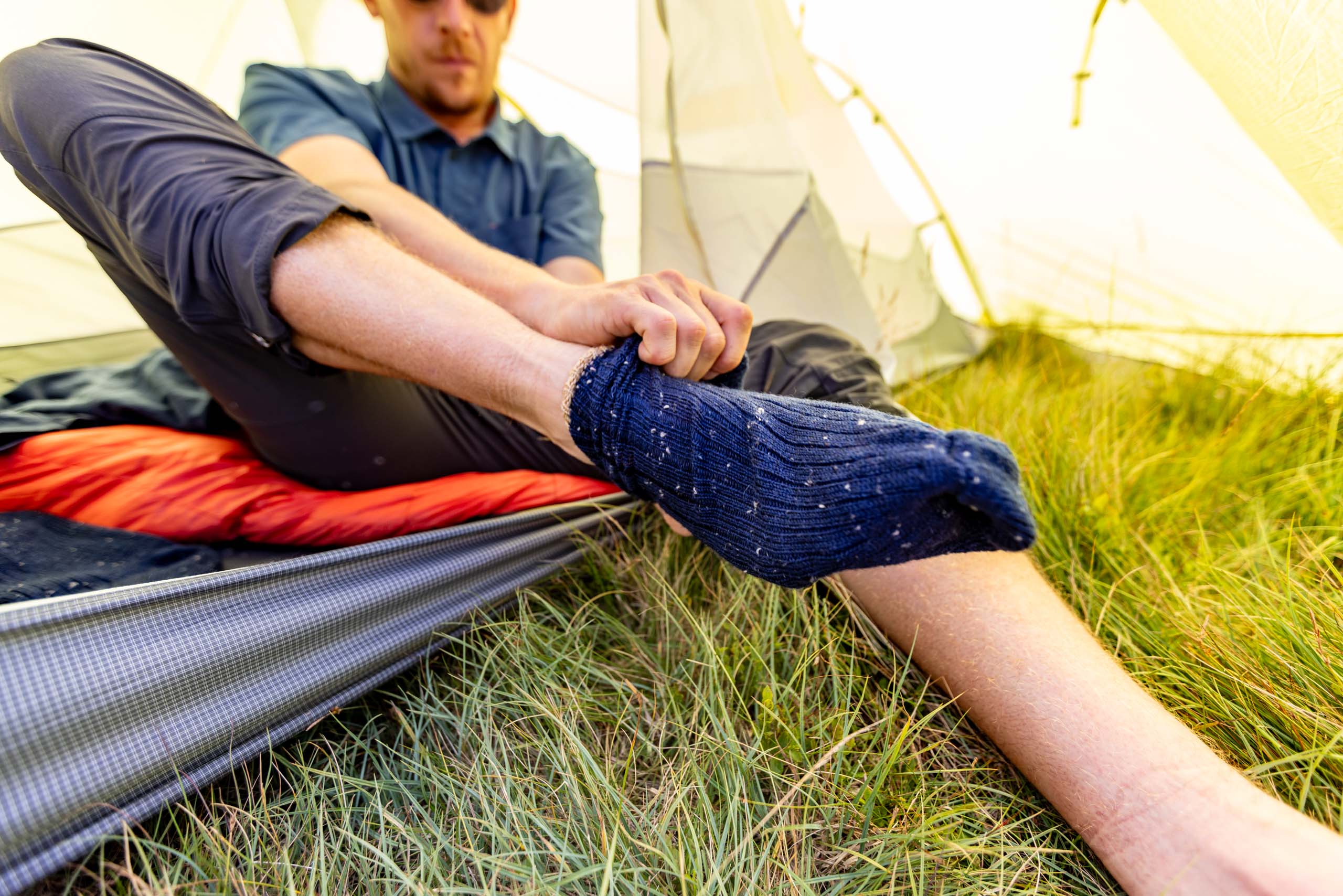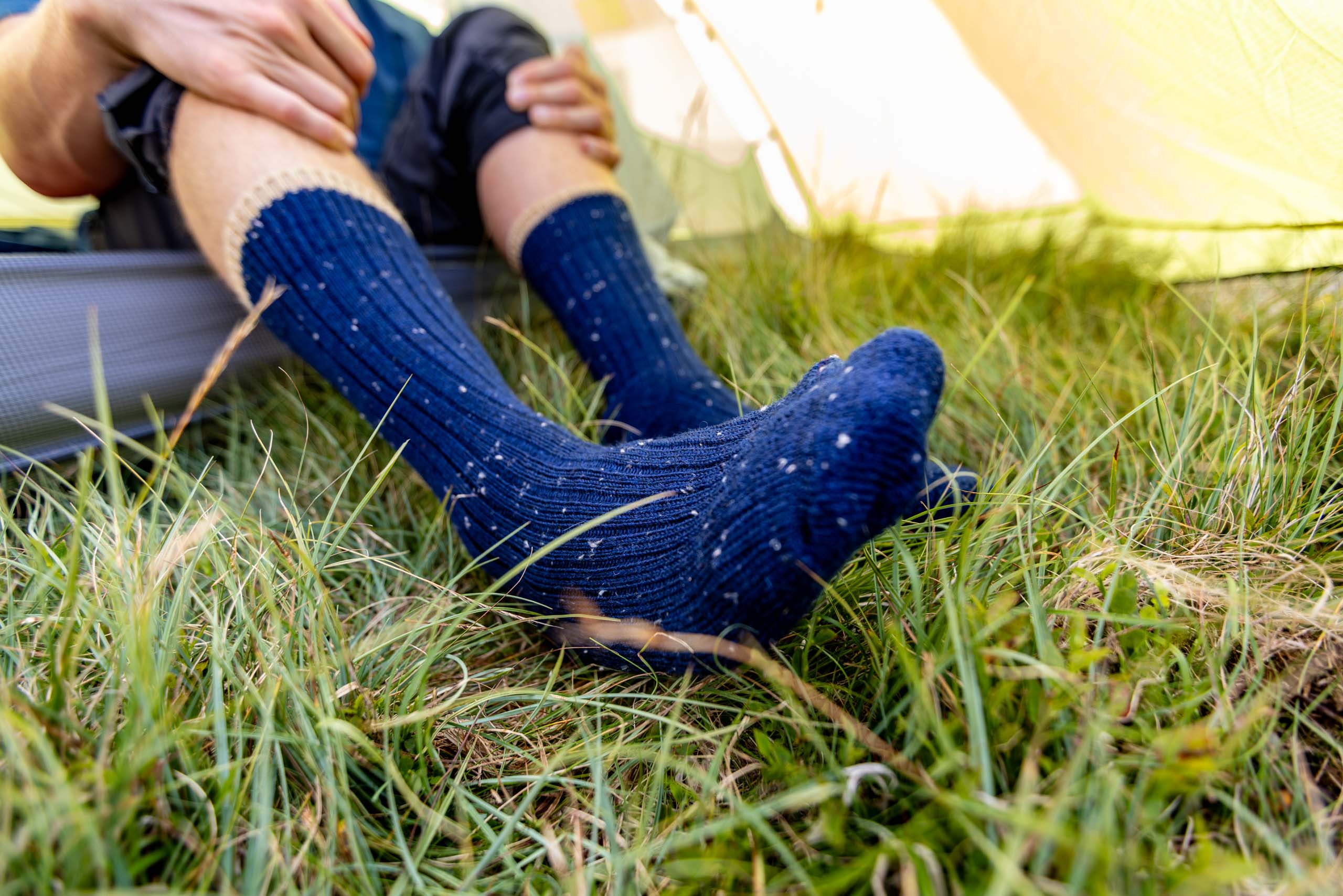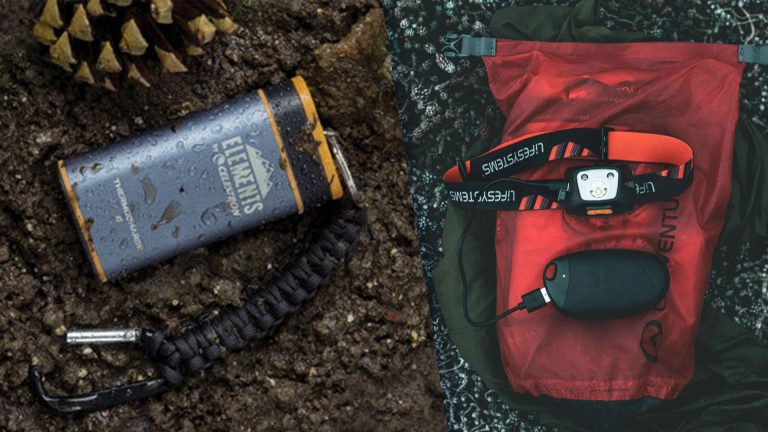Ah, the humble hiking sock. Often overlooked but (hopefully) never forgotten, I can’t overstate the difference a nice and cosy, well performing sock can have on your outdoor adventures. And a sustainably made one? Now that’s the good stuff.
Queue: the Silverstick Pennine Socks. These are thick socks that are made using wool sourced from sheep that graze on the Pennines. In fact, all of Silverstick’s accessories are produced using materials sourced here in Britain, while the ‘Made in Britain’ range has the additional benefit of being crafted and produced here too.
Related: Best Hiking Socks
This continues right down to the dyeing and (recycled) packaging processes, drawing on the rich textile heritage we have here in Britain. While this, of course, offers the benefit of supporting local trades and age-old crafts, it also greatly reduces the carbon footprint of the product itself, and if you live in the UK, it’ll reduce the footprint of your shopping too.
In addition to this, Silverstick hold their products to some pretty rigorous testing standards to make sure they aren’t causing harm to people or the environment. Their dye houses, for example, are certified to be non-toxic by the Global Organic Textile Stand, as well as by Oexo-Tex. Their inks are also tested by these organisations and are plastic-free.

But what about the sock, I hear you say. Well, I’ve been out testing the Pennine Wool socks on some hiking trips across Welsh Mountains, and most recently on a gear testing weekend in the Lake District. The verdict? I like them, I like them a lot.
While not the most technical socks on the market, if you want a no-fuss pair of hiking socks that’ll see you through all sorts of hiking in autumn through to spring, I think you’ll get along well with these. Unlike a lot of cotton heavy options out there, they also have the feeling like they’ll last a long time, or at the every least, can be easily repaired with some basic sewing skills.
I’ll admit that I approached these with a preconception: I expected them to be itchy. Fortunately, for me, they haven’t been itchy at all. That being said, this might not be the case for everyone. Especially those with lanolin allergies.
In terms of warmth, wool definitely reigns supreme here. I’d have no hesitations reaching for these on some autumn and winter hiking trips here in the UK – even on snowy mountain days. While too hot for the warmer months, Silverstick have some ‘sport’ socks options too for activities that require a higher level of breathability.

What’s also great about these – and wool socks in general – is that they wick moisture away to prevent dampness, resist odour even after long days on the trail, and they provide cushioning and softness that help reduce friction and the risk of blisters. They might not have that close, foot supporting feel that you get from socks with a high elastane content, but I’ve still found them very comfortable to wear.
All in all, I like what Silverstick have done here. They’ve combined sustainability and modern technologies with centuries-old craftsmanship to create a mighty fine sock. And while not choc-a-bloc full of high-tech materials and weave patterns etcetera, that’s kind of what I like about them. It’s wool doing what wool does best in a simple, timeless design.



